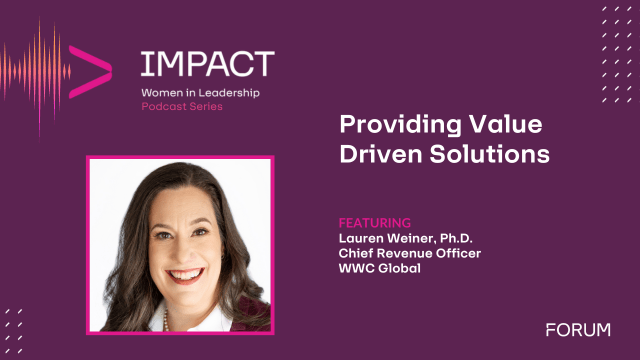By Sanjay Sarma
My first child was born last week, a life-changing event and an amazing source of joy and inspiration. Our family also had a wonderful patient experience at Virginia Hospital Center (part of the Mayo Clinic network). Everyone on the team from nurses and physicians to the people who cared for our rooms was personable, positive, responsive and sincerely concerned about our individual situation and needs. It made a difference during a challenging time such as childbirth, and there is much to be learned from this. In many ways it reminded me of the service experience I’ve had dining at trendy restaurants in Tokyo…but I digress. Let’s focus on patients!
Speaking of which…
There was a lot of buzz at the annual HIMSS conference and the AHIP meeting last month about improving “patient-focus.” Seema Verma announced the new MyHealthEData initiative, while Alex Azar laid out his four priorities, led by “giving consumers greater control over Health Information through interoperable and accessible Health Information Technology.” The NIH is focusing on precision medicine and tailoring treatments to individual patients. CMS is developing “meaningful measures” that impact health outcomes, and increasingly using patient experience as a measure of Healthcare “value.” Finally, we have an Administration that clearly favors “market-based” reforms over Government-controlled options.
If we put the ideas of patient-focus and market-based together, we can infer the need to treat patients like valued customers, just like we expect in other industries. Many industries already have personalized experiences and use customer learning to drive innovation. Consider the engaging experiences that companies like Amazon, Disney, Google and Facebook create.
 Why can’t Healthcare learn from these other industries, and why is Healthcare always late to adopt innovation? The answer is that Healthcare is not a traditional market and is triangulated in incentives. When a patient visits the clinician, they are not viewed as the customer. The customer instead is the health insurer, who determines how much the provider will be paid based on claims. Patients are viewed as a third party. Since patients pay for Healthcare through premiums, shouldn’t health insurers view them, instead of employers and HR departments, as customers? The current triangulation between patients, providers, and payers puts patients in a difficult position.
Why can’t Healthcare learn from these other industries, and why is Healthcare always late to adopt innovation? The answer is that Healthcare is not a traditional market and is triangulated in incentives. When a patient visits the clinician, they are not viewed as the customer. The customer instead is the health insurer, who determines how much the provider will be paid based on claims. Patients are viewed as a third party. Since patients pay for Healthcare through premiums, shouldn’t health insurers view them, instead of employers and HR departments, as customers? The current triangulation between patients, providers, and payers puts patients in a difficult position.
Many who serve the Federal Health industry are working to respond by building new patient-focused applications, data and analytics products offering a full picture of the patient, and providing services that impact patient outcomes and experiences. There is no shortage of online, telehealth and mobile applications but few are adopted and stick. Consider all the vendors at HIMSS this year, and how few actually have real Healthcare customers. Firms need to think first about what patients, as customers, are really asking for:
The 5 Cs of the Healthcare Customer Experience
Patients are clearly demanding better clarity from their providers and  payers. The key is driving ongoing engagement. Patients are requesting clarity of communications, including clear and consolidated bills, clear discharge instructions, and clarity with medical education.
payers. The key is driving ongoing engagement. Patients are requesting clarity of communications, including clear and consolidated bills, clear discharge instructions, and clarity with medical education.
Convenience includes multiple ways to contact and schedule with providers and insurance companies, simplification and clear explanation of bills and coverage levels, and an overall unified experience, both within facilities and outside of the care setting. Patients are demanding access to medical records, digital appointment scheduling and prescription refills.
 Customization is a broad term that means treating patients based on their individual situation. Behavioral, environmental and genetic factors all contribute to individual health and must be analyzed. Examples include understanding the psycho-social factors that determine whether a patient will respond to reminders through text messaging or phone-based health coaching, whether a patient is more likely to contract a particular illness due to location or environment, or whether a patient is likely to respond to a particular treatment based on genetics (precision medicine).
Customization is a broad term that means treating patients based on their individual situation. Behavioral, environmental and genetic factors all contribute to individual health and must be analyzed. Examples include understanding the psycho-social factors that determine whether a patient will respond to reminders through text messaging or phone-based health coaching, whether a patient is more likely to contract a particular illness due to location or environment, or whether a patient is likely to respond to a particular treatment based on genetics (precision medicine).
Health systems must also employ compassion to better engage patients. When making a Healthcare decision, 85 percent of patients said compassion was very important to them, while only 31 percent of patients said cost was very important. Showing compassion is not only about providing pleasant experiences during clinical encounters, but also impacts how we design applications and health interventions.
Finally, patients need carrots that motivate them effectively.  While many patients know what they need to do, the tendency to do the opposite often wins. Positive reinforcement is a concept that health systems must employ to encourage healthy behaviors. Keas is an employee health and wellness program that combines social media and online games to create happier, healthier workforces. Keas leverages gaming mechanics, social interaction and small groups to motivate people toward healthy outcomes and rewards their efforts and their support of coworkers achieving their goals.
While many patients know what they need to do, the tendency to do the opposite often wins. Positive reinforcement is a concept that health systems must employ to encourage healthy behaviors. Keas is an employee health and wellness program that combines social media and online games to create happier, healthier workforces. Keas leverages gaming mechanics, social interaction and small groups to motivate people toward healthy outcomes and rewards their efforts and their support of coworkers achieving their goals.
What will the next generation of health applications be? What if an application could provide personalized health assistance by analyzing our genetic profile to offer targeted recommendations? For example, an app to mirror the genetic test I took recently showing a high response for acetaminophen, but low for ibuprofen. What if Google could monitor my particular location, the health status of people nearby, and scan social media to identify potential outbreaks of a disease to provide preventive alerts? What if my iPhone apps could monitor my activity and make targeted recommendations? These innovations are starting to happen, but we must overcome societal fears of privacy, intrusion and data security to push the vision further.
The Call to Action
The responsibility is shared among payers, providers, Government, technology vendors, and patients. Commercial payers and CMS can be more patient and customer-focused by collecting and analyzing member and beneficiary clinical, administrative and experience information. With access to information on over 100 million beneficiaries, CMS has the potential to drive advancements in quality of care, cost reduction and patient experience and to engage with members better in the future to allow programs like MyHealthEData to thrive.
HHS can support more large-scale precision medicine initiatives that collect and aggregate advanced patient-level data. Analyzing clinical records, genetic information, and environmental data has the potential to improve health outcomes dramatically. NCI could lead by building a “cancer data trust.” Examples of efforts such as the VA Million Veterans Program (MVP) should be used to catalyze larger programs at the national level.
Providers must share data from EMRs and other relevant applications to inform payers of the health status of their members, and payers must share data on coverages levels, care approvals, and expected reimbursements, bonuses and penalties. Only when these collaborations succeed broadly will we find the best care protocols at a reasonable cost.
 EMR and other technology companies that store patient-level data must provide open APIs to facilitate data sharing and collaboration rather than holding patients hostage to closed applications that store critical data. Appropriate incentive structures and regulations must be in place to make this happen.
EMR and other technology companies that store patient-level data must provide open APIs to facilitate data sharing and collaboration rather than holding patients hostage to closed applications that store critical data. Appropriate incentive structures and regulations must be in place to make this happen.
Finally, patients must take charge by demanding access to the  information and resources that will inspire them towards healthy behaviors and wellness. Patient and consumer advocates must raise the voice of the customer to the forefront of both national and local Healthcare policy and inform process and application design with deep research, both at the individual and population level. The time to act is now, and the opportunity has never been greater!
information and resources that will inspire them towards healthy behaviors and wellness. Patient and consumer advocates must raise the voice of the customer to the forefront of both national and local Healthcare policy and inform process and application design with deep research, both at the individual and population level. The time to act is now, and the opportunity has never been greater!












